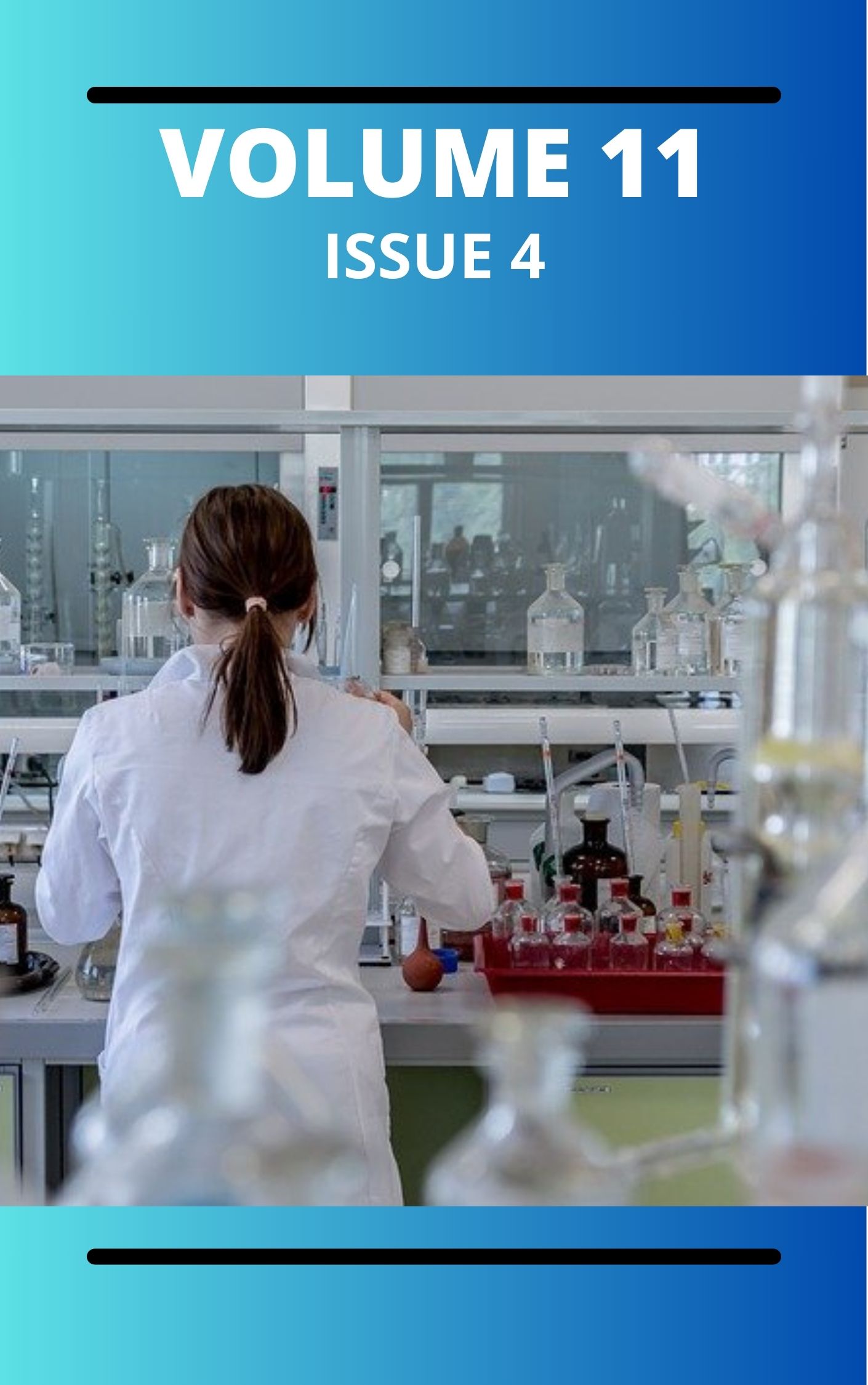Computational Study of the Reaction Mechanism for the Formation of 4,5-Diaminophthalonitrile from 4,5-Dibromo-1,2-Diaminobenzene and Copper Cyanide
DOI:
https://doi.org/10.4314/3fdxhb05Keywords:
Transition state, density functional theory, thermodynamic property, activation barrierAbstract
This study investigates the mechanism of the reaction between 4,5-dibromo-1,2-diaminobenzene and copper cyanide using Density Functional Theory (DFT) calculations. The kinetics and the thermodynamic properties of the reaction were analyzed, revealing two major steps with activated complexes AC1 and AC2. Scheme 3 accurately depicts the reaction pathway. A triangular Cu-C=N moiety was found in the calculated transition states (TS), AC1 and AC2. The thermodynamic parameters for the first step show ΔG = -606.8 kJ mol-1 , ΔH = -610.7 kJ mol-1 and ΔS = -0.0132 kJ mol-1K-1 while for the second step ΔG = -600.1 kJ mol-1, ΔH = -603.6 kJ mol-1, and ΔS = -0.0117 kJ mol-1K-1 were obtained. The activation energies (Ea and Ec) for steps 1 and 2 are 189.0 kJ mol-1 and 210.6 kJ mol-1, respectively. The positive values of and confirm the presence of energy barriers in both steps. These findings provide critical insights into the energetics and mechanism of the DDB reaction with copper cyanide, which is very crucial in understanding the strategy for the development of efficient synthetic procedures for the phthalonitrile.
Downloads
Published
Issue
Section
Similar Articles
- U. M. Etesin, Distribution of Benzene, Toluene, Ethyl Benzene, Xylene (Btex) and Polynuclear Aromatic Hydrocarbons (PAHs) in Diesel Fuel from Independent Marketers and Bunkering Activities in Nigeria , Communication In Physical Sciences: Vol. 4 No. 2 (2019): VOLUME 4 ISSUE 2
- Emmanuel U. Nwazue, Chinedu U. Ibe, Petrography and Geochemical Studies of Eyingba Lead-zinc Mineralization, Lower Benue Trough , Communication In Physical Sciences: Vol. 5 No. 3 (2020): VOLUME 5 ISSUE 3
- S. A. Odoemelam, Assessment of Heavy Metal Status of Orashi River Along the Engenni Axis, Rivers State of Nigeria , Communication In Physical Sciences: Vol. 4 No. 2 (2019): VOLUME 4 ISSUE 2
- Akaezue Nelson Nwagbogwu, Ngiangia Alalibor Thompson, Onyeaju Michael Chukwudi, Thermal Properties of Diffusing Species into Some Host Metals , Communication In Physical Sciences: Vol. 11 No. 4 (2024): VOLUME 11 ISSUE 4
- A. E. Usoro, Comparing the Performance of Alternative Generalised Autoregressive Conditional Heteroskedasticity Models in Modelling Nigeria Crude Oil Production Volatility Series , Communication In Physical Sciences: Vol. 4 No. 2 (2019): VOLUME 4 ISSUE 2
- Enefiok Archibong Etuk, Omankwu, Obinnaya Chinecherem Beloved, Spiking Neural Networks (SNNs): A Path towards Brain-Inspired AI , Communication In Physical Sciences: Vol. 12 No. 2 (2025): VOLUME 12 ISSUE 2
- Abidemi Emmanuel Adeniji, Ayotunde Abel Ajayi, Abiodun Isiaka Egunjobi, Kayode Stephen Ojo, Difference Synchronization of Fractional Order Chaotic Systems Via Active Control , Communication In Physical Sciences: Vol. 11 No. 3 (2024): VOLUME 11 ISSUE 3
- Edet O. Odokwo, Ngozi M. Uzoekwe, Gas Chromatography-Mass Spectrometry Vernonia Hymenolepis Analysis of the Solvent-Solvent Extract of Vernonia Hymenolepis Leaves , Communication In Physical Sciences: Vol. 8 No. 4 (2022): VOLUME 8 ISSUE 4
- Felix B. Fatoye, Yomi B. Gideon, Joseph I. Omada, Maceral Characterization of the Cretaceous Effin – Okai Coal De-posit in Northern Anambra Basin, Nigeria , Communication In Physical Sciences: Vol. 5 No. 3 (2020): VOLUME 5 ISSUE 3
- Anduang Ofuo Odiongenyi, Removal of Ethyl Violet Dye from Aqueous Solution by Graphite Dust and Nano Graphene Oxide Synthesized from Graphite Dust , Communication In Physical Sciences: Vol. 4 No. 2 (2019): VOLUME 4 ISSUE 2
You may also start an advanced similarity search for this article.




